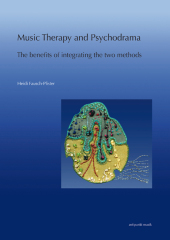 Neuerscheinungen 2012Stand: 2020-01-07 |
Schnellsuche
ISBN/Stichwort/Autor
|
Herderstraße 10
10625 Berlin
Tel.: 030 315 714 16
Fax 030 315 714 14
info@buchspektrum.de |

Heidi Fausch-Pfister
Music Therapy and Psychodrama
The benefits of integrating the two methods
2012. 152 S. 14 SW-Abb., 7 Tabellen. 24 cm
Verlag/Jahr: REICHERT 2012
ISBN: 3-89500-899-0 (3895008990)
Neue ISBN: 978-3-89500-899-3 (9783895008993)
Preis und Lieferzeit: Bitte klicken
That which is raised up from the ocean of the subconscious by music therapy can be pulled ashore with the help of psychodramatic elements. This effect is illustrated with striking examples from child and adolescent psychiatry, neurology and adults therapy, which are analysed in a sophisticated way. Various psychodramatic techniques and instruments supplement the current methods of music therapy. The author explains in what ways psychodramatic instruments and techniques can reinforce the therapeutic process in music therapy. They are particularly helpful in intensifying and structuring the therapeutic process, focusing on a theme, applying what has been learned during therapy in daily life, and transferring problems of everyday life into the therapy. In putting these ideas into practice, the reader is aided by practical suggestions and methodological advice.
The book provides a valuable and interesting read for students of music and art therapy, therapists, pedagogues, music teachers and keen amateurs.
"That which is raised up from the ocean of the subconscious by music therapy can be pulled ashore with the help of psychodramatic elements." This effect is illustrated with striking examples from child and adolescent psychiatry, neurology and adults´ therapy, which are analysed in a sophisticated way. Various psychodramatic techniques and instruments supplement the current methods of music therapy. The author explains in what ways psychodramatic instruments and techniques can reinforce the therapeutic process in music therapy. They are particularly helpful in intensifying and structuring the therapeutic process, focusing on a theme, applying what has been learned during therapy in daily life, and transferring problems of everyday life into the therapy. In putting these ideas into practice, the reader is aided by practical suggestions and methodological advice.
The book provides a valuable and interesting read for students of music and art therapy, therapists, pedagogues, music teachers and keen amateurs.
"This book is simply a "must have" for a broad audience of professionals working in the field of music therapy, art therapy and/or psychology."
Corinne Galli, MT-BC, NMT


